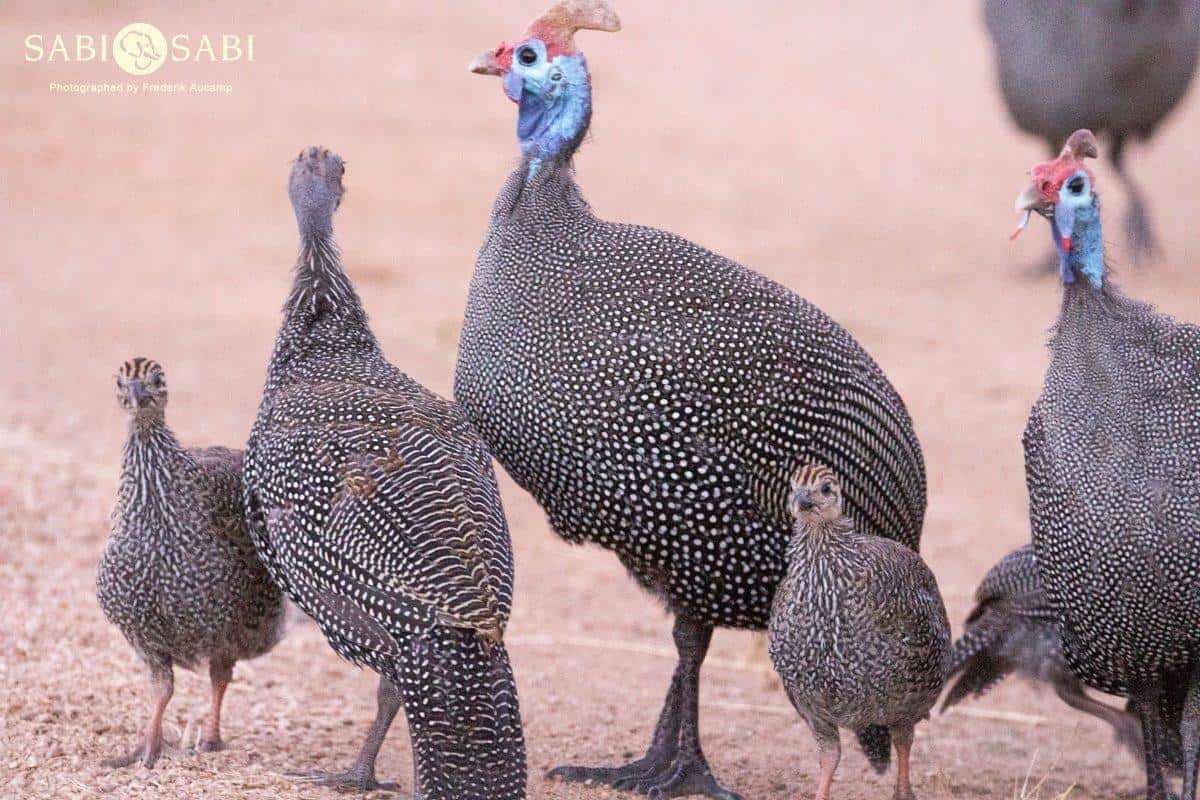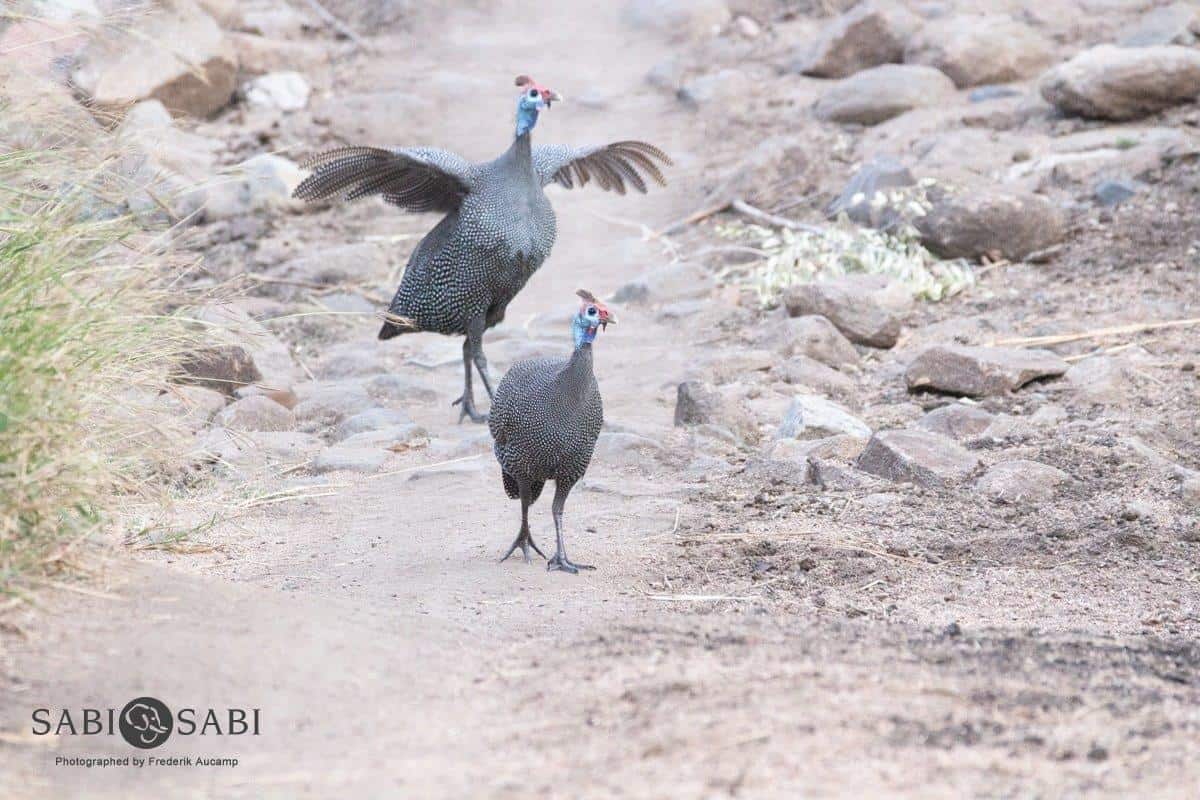Helmeted Guineafowl
on Jun 28, 2019Species name: Helmeted Guineafowl
Scientific Name: Numida meleagris
Weight: Male: 1.38 – 1.50kg - Female: 1.38 - 1.50kg
Length: Male: 53-58cm - Female: 53-58cm
General Habitat: They prefer open terrain. Anything from sub-desert, thorny scrub and savannas. They also prefer areas next to rivers, wetlands and bases of mountains.
Diet: Omnivorous; They will eat anything from seeds, underground bulbs, termites, grasshoppers, and a variety of other insects.

In their non-breeding season, Helmeted Guineafowl flocks can be as big as 20 to 50 individuals, but sometimes in good feeding areas they will aggregate up to hundreds of birds. During this period, they will mostly feed on plant material, like underground bulbs, grass seeds and grass stems. Although in their breeding season, male and female monogamous pairs will form and break away from the rest to nest alone and their diet will shift more towards insects like termites, dung beetles and worms. The female will select a nesting site, usually in tall grass under the cover of a thick bush and she will lay anything from 6 – 18 eggs in the nest. The incubation period is about 24-27 days long and most of the eggs will usually hatch after this period. Even though most of the eggs do hatch, a lot of the keets (chicks) die from predation and other natural occurrences, but in good rainy seasons, their numbers may even double in size, making up for their losses.
Helmeted Guineafowls are probably one of my favourite birds at Sabi Sabi. They have beautiful black feathers covered with thousands of white dots; a blue upper neck and head; and to top it all off, they have a large bony helmet on top of their heads, hence their name Helmeted Guineafowl. They are truly a beautiful species of bird and to me they are a true symbol of South Africa.
My Memorable Sighting
Just over a year ago on one of our afternoon safaris we came across a big male leopard walking down a long narrow road busy marking his territory. As we approached a sharp bend in the road, we spotted a whole flock of Helmeted Guineafowl with about a dozen of their keets busy scratching around, looking for food. This big male leopard was intrigued by the potential snack in front of him and quickly pounced towards the guineafowl. Within split seconds, the leopard was in the middle of the guineafowl flock and started munching away on the poor guineafowl keets. The entire flock of guineafowl started uttering their “kek, kek, kek, kek, kaaarrrr ka ka ka krrrrr” alarm call. While all the adults retreated to a safe distance from the ferocious predator, some of keets scattered around the thick grass foliage trying to avoid the leopard’s jaws and claws.
After the leopard left and continued with scent marking, the adults came back in search of any keets that might have survived. Four or five of the keets managed to survive and raced towards the shelter of their parent’s wings.
It was sad seeing some of the guineafowl keets die, but it was amazing to see how the Helmeted Guineafowls reacted to a predator and that they came back in search for any survivors.
Photo Content



















